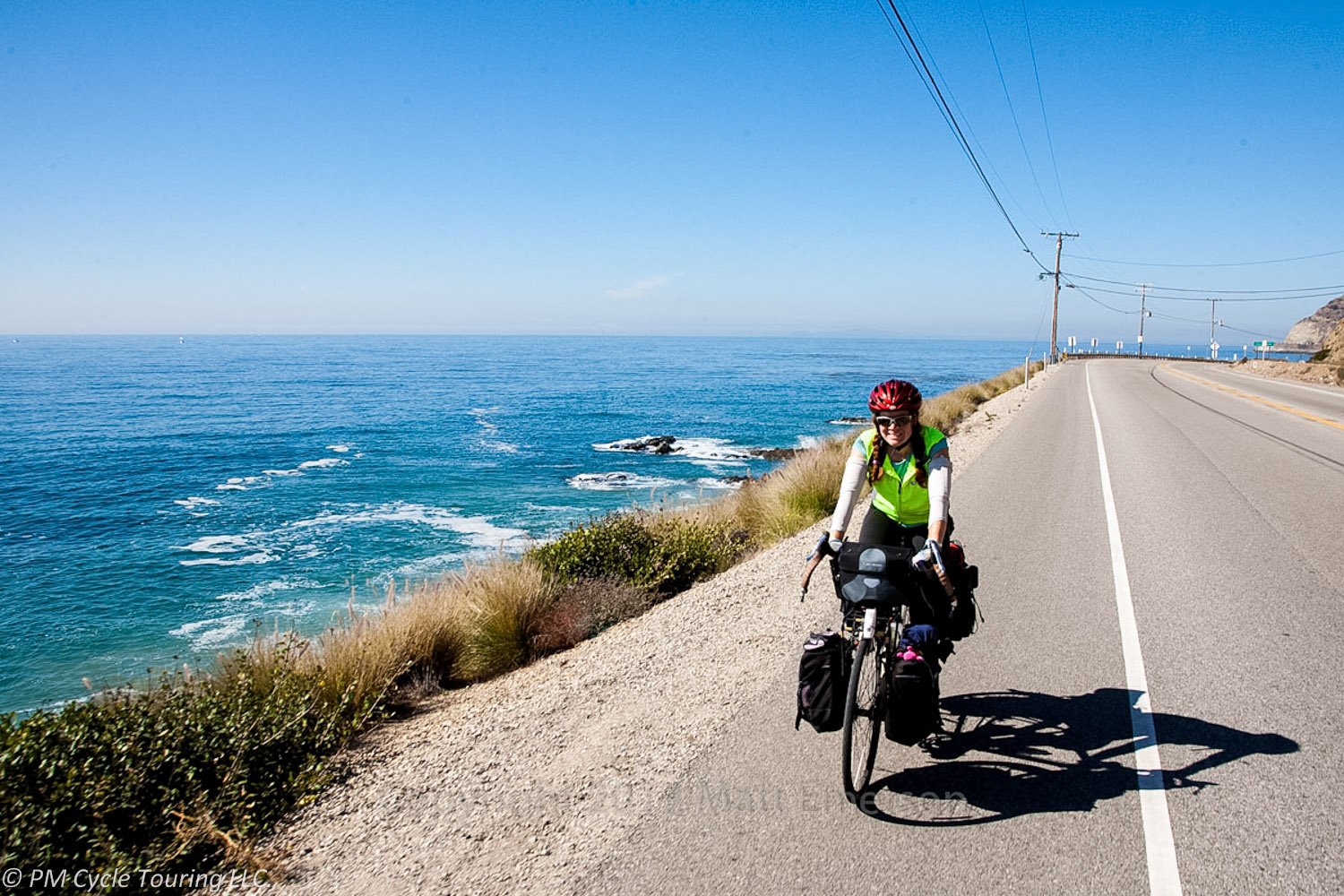If you live in Southern California, or you have family in the area, and are looking for a great 4 day practice ride, I might suggest Goleta to Los Angeles. There are a few advantages to this ride: ease of transport to the start line, beautiful ocean riding, and access to convenient state campgrounds.
First off, take the Pacific Surfliner train to Goleta. Amtrak is a great option for bicycle tourists. It’s easy to purchase a ticket and reserve a spot for your bicycle (advanced reservations for bicycles are required). When the train gets to the station look for the conductor waving you towards him, you will either wheel your bike directly on to the train or lift the bicycle up to the conductor in a cargo car near the rear of the train. Panniers can stay on the bike if it is not too heavy to lift.
Upon arrival at Goleta use ACA Section 4 Maps 55 and 54; make your way north to Refugio State Beach. You might be tempted to stop at El Capitan State Beach, but trust me, the hiker/biker sites at Refugio are worth the extra few miles; you will be staying as close to the beach as you can get.
For Day 2, retrace your route from Day 1, and continue on through Santa Barbara to Carpinteria State Beach. This makes for a very short, approximately 35 mile day 2. Enjoy the ride, especially on the bike path through UC Santa Barbara. As you ride through campus, you will notice all the bike racks for the students, and if between classes the hundreds of people biking around. It truly is amazing.
Day 3, leave Carpinteria State Beach, and head south through Ventura and Oxnard, around Mugu Point and follow the ocean to Malibu. Leo Carrillo State Beach has a very nice, isolated hiker/biker site behind the dumping station, hidden in the trees. You can walk to the beach or just enjoy the sunlight filtering through the trees.
For your final day, make your way into Santa Monica. The ride through the transition from Malibu into Santa Monica is the most harrowing part of the ride. Keep your eyes open for doors opening on the right, and cars wishing to pass on the left. It’s just a few miles, and then you have the dedicated bike path to look forward to. Although you have to share the path with runners, walkers, roller bladers and other cyclists, it is still a pleasant ride past the pier.
From Santa Monica, there’s a few options. Ride into LA, find a metro station, and head back to Union Station. From there you can return to your starting point via MetroLink or Amtrak. If you ride the Balloona Creek bike path upstream (away from the ocean), you can pick up the Expo Line at the end of the bike path.
And there you have it. A nice, four day bicycle tour, through some of the best that Southern California has to offer. Can anyone else suggest a short tour? Leave your ideas in the comments!




